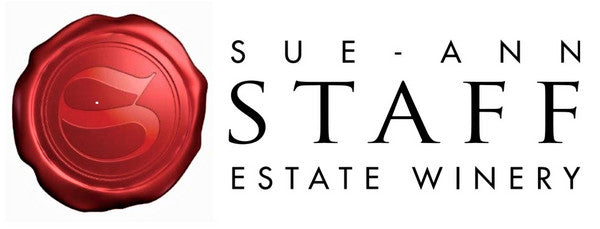SCORE POINTS WITH YOUR OENOPHILE FRIENDS BY TOURING THESE SMALL-BATCH WINERIES IN NIAGARA—AND BY BRINGING HOME A BOTTLE OR TWO ...
Small-batch wineries are just that: they produce limited quantities of their wines since they have smaller vineyards, lower grape yields and more compact production facilities. Niagara’s larger operations can send out 50,000 cases or more each year; boutique wineries, like the ones described below, may produce fewer than 10,000 cases—which means that if you taste a vintage you like, you’d better pick up a bottle (or several) before they run out!
1 Rancourt Winery is a Niagara gem. The 25-acre cottage winery prides itself on growing all of the grapes for its VQA Merlot, Cabernet Sauvignon, Cabernet Franc, Chardonnay and Riesling under the expert guidance of winemaker Eric Pearson. 1829 Concession 4, Niagara-on-the-Lake, 1-905-468-2882; rancourtwinery.com
Winemaker Sue-Anne Staff’s eponymous operation is among the top small-batch wineries in Niagara
2 Viticulture is in Sue-Anne Staff’s blood: she comes from five generations of grape growers but is the first winemaker in her family, and since 2009 has helmed her own Sue-Anne Staff Estate Winery. Seventy per cent of the vines on Staff’s property are dedicated to Riesling; her offerings include interesting Viognier-Riesling and Riesling-Cabernet Franc blends. A second label, Fancy Farm Girl, debuted earlier this year as an affordable, approachable and fun alternative to Staff’s more premium offerings. 3210 Staff Ave., Jordan, 1-905-562-1719; sue-annstaff.com
3 For the last four decades, the Neufeld family has been cultivating grapes on the land that is now Palantine Hills Estate Winery. It’s actually historic soil: battles were fought here during the War of 1812, and unearthed militia artifacts have been preserved for visitors to see. 911 Lakeshore Rd., Niagara-on-the-Lake, 1-905-646-9617; palatinehillsestatewinery.com
4 Two brothers, Greg and Yannick Wertsch, are the brains behind Between the Lines Family Estate Winery, so named because it’s located between Lines 5 and 6 on Four Mile Creek Road. Try their signature Lemberger—made from a lesser-known Austrian grape—or their bestselling Vidal. 991 Four Mile Creek Rd., Niagara on-the-Lake, 1-905-262-0289;betweenthelineswinery.com
5 For Andrew and Christina Brooks, Back 10 Cellars has been a true labour of love. The couple’s journey towards owning their own winery began in 2002 when they bought their 10-acre farm and began growing grapes for Featherstone Estate Winery. Their very first production under their own label was their 2012 Big Reach Riesling, which won gold at the 2013 All Canadian Wine Championships, alongside limited vintages of Start from Scratch Chardonnay and Blood Sweat & Years Pinot Noir. 4101 King St., Beamsville, 1-905-562-3365; back10cellars.com
6 Although terroir is an oft-discussed topic among vintners and oenophiles, it’s particularly notable at Coyote’s Run. Two different types of clay soil result in distinctly different wines: the Red Paw Vineyard’s red Trafalgar clay loam helps to produce fruity and aromatic wines, while the Black Paw Vineyard, with its more common dark Toledo clay loam, generates earthy and structured blends. 485 Concession 5 Rd., Niagara-on-the-Lake, 1-905-682-8310; coyotesrunwinery.com
7 Ravine Vineyard Estate Winery is not only a vineyard, it’s also a restaurant and a specialty grocery store. The farm here has been part of Norma Jean Harber’s family since 1867. Now she and her husband Blair, alongside winemaker Martin Werner, produce premium small-batch organic Chardonnays, Cabernet Sauvignons and Merlots. At the restaurant, the farm-to-table ethos is quite literal: pigs are raised in a nearby pen while fresh vegetables are brought in from the grounds’ garden. And at the Canning House, visitors can pick up preserves, jams, pickles, sauces and freshly baked artisan breads. 1366 York Rd., St. Davids, 1-905-262-8463;ravinevineyard.com
—Linda Luong






